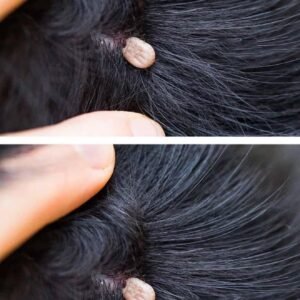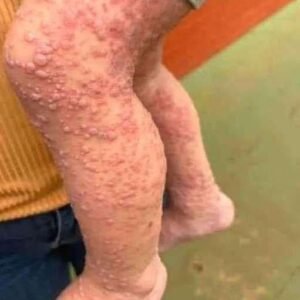Psoriasis is a chronic skin condition with several types: Plaque Psoriasis, marked by red patches with silvery scales; Guttate Psoriasis, characterized by small, drop-shaped spots;
Pustular Psoriasis, featuring red skin with pus-filled blisters; Inverse Psoriasis, which affects moist skin folds; and Erythrodermic Psoriasis, a severe, emergency condition with widespread redness and peeling. It is not contagious.
The causes include immune system dysregulation, where T-cells attack healthy skin cells, and genetic factors.
Common triggers include alcohol, certain medications, and infections. Diagnosis is through a physical exam and sometimes a biopsy.
Though incurable, treatments can manage symptoms and improve quality of life.
Psoriasis is a chronic skin condition with several types: Plaque Psoriasis, marked by red patches with silvery scales;
Guttate Psoriasis, characterized by small, drop-shaped spots; Pustular Psoriasis, featuring red skin with pus-filled blisters;
Inverse Psoriasis, which affects moist skin folds; and Erythrodermic Psoriasis, a severe, emergency condition with widespread redness and peeling. It is not contagious.
The causes include immune system dysregulation, where T-cells attack healthy skin cells, and genetic factors.
Common triggers include alcohol, certain medications, and infections.
Diagnosis is through a physical exam and sometimes a biopsy.
Though incurable, treatments can manage symptoms and improve quality of life.
Psoriasis is a chronic skin condition with several types: Plaque Psoriasis, marked by red patches with silvery scales; Guttate Psoriasis, characterized by small, drop-shaped spots;
Pustular Psoriasis, featuring red skin with pus-filled blisters; Inverse Psoriasis, which affects moist skin folds; and Erythrodermic Psoriasis, a severe, emergency condition with widespread redness and peeling. It is not contagious.
The causes include immune system dysregulation, where T-cells attack healthy skin cells, and genetic factors.
Common triggers include alcohol, certain medications, and infections. Diagnosis is through a physical exam and sometimes a biopsy.
Though incurable, treatments can manage symptoms and improve quality of life.





